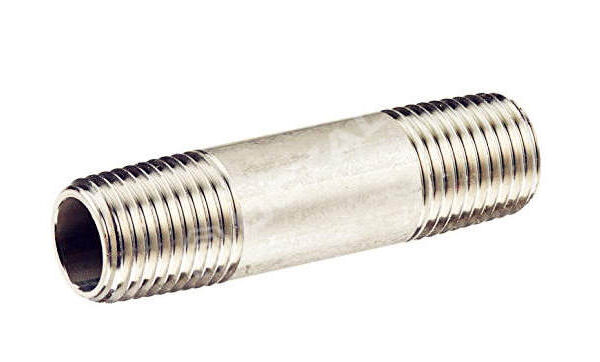
Chemical peels are a popular cosmetic procedure that can help to improve skin texture, reduce fine lines and wrinkles, and treat acne and hyperpigmentation. To ensure you get the most out of your chemical peel, it’s important to follow a few key steps before, during, and after the procedure.
Pre-Peel Preparation
- Consult with a Dermatologist: Before scheduling a chemical peel, consult with a dermatologist to determine if it’s right for you and to discuss your specific goals.
- Prepare Your Skin: Avoid sun exposure and tanning for several weeks before the peel. Discontinue the use of exfoliating products, retinoids, and other harsh skincare ingredients.
- Inform Your Dermatologist: Let your dermatologist know about any medications you’re taking, as some may interact with the chemical peel.
During the Procedure
- Follow Your Dermatologist’s Instructions: Follow your dermatologist instructions carefully during the procedure. This may include applying a numbing cream or avoiding certain movements.
- Be Patient: The peeling process may take several days, and your skin may be temporarily red or irritated.
Post-Peel Care
- Protect Your Skin: Avoid sun exposure and use a broad-spectrum sunscreen with SPF 30 or higher daily.
- Hydrate: Keep your skin hydrated by drinking plenty of water and using a gentle moisturizer.
- Avoid Irritants: Avoid using harsh skincare products or exfoliating scrubs during the healing process.
- Follow Your Dermatologist’s Instructions: Follow your dermatologist’s specific post-peel care instructions, which may include avoiding certain activities or using prescribed medications.
Additional Tips for Maximizing Results
- Consider a Series of Peels: For more dramatic results, your dermatologist may recommend a series of chemical peels.
- Combine with Other Treatments: Chemical peels can be combined with other treatments, such as laser resurfacing or microdermabrasion, for even more impressive results.
- Maintain a Healthy Lifestyle: A healthy diet, regular exercise, and adequate sleep can help to promote skin health and enhance the results of your chemical peel.
Here are some additional tips for maximizing your chemical peel results:
- Choose the Right Type of Peel: There are different types of chemical peels, each with its own strengths and weaknesses. Your dermatologist will recommend the best type of peel for your specific needs and skin type.
- Be Realistic About Expectations: While chemical peels can be very effective, they may not be able to completely eliminate all signs of aging or skin damage. It’s important to have realistic expectations and understand the limitations of the procedure.
- Avoid Smoking and Excessive Alcohol: Smoking and excessive alcohol consumption can damage the skin and interfere with the healing process.
- Be Patient: The results of a chemical peel may not be immediately apparent. It can take several weeks or even months for your skin to fully heal and for the final results to become visible.
Additional Information
- Cost: The cost of a chemical peel can vary depending on the type of peel, the location of the practice, and the experience of the dermatologist.
- Recovery Time: Recovery time for a chemical peel can range from a few days to several weeks, depending on the depth of the peel.
- Side Effects: Side effects of a chemical peel may include redness, peeling, dryness, and temporary discomfort.
Additional Information on Chemical Peels
Types of Chemical Peels
There are three main types of chemical peels:
- Superficial Peels: These peels use mild acids to exfoliate the outermost layer of skin. They are suitable for treating mild acne, fine lines, and uneven skin tone.
- Medium Peels: Medium peels use stronger acids to penetrate deeper into the skin. They can help to improve moderate acne, wrinkles, and sun damage.
- Deep Peels: Deep peels are the most intense type of chemical peel and can help to treat severe acne, deep wrinkles, and sun damage. They require anesthesia and may involve some downtime.
Choosing the Right Peel
The type of chemical peel you need will depend on your specific skin concerns and goals. Your dermatologist will be able to recommend the most appropriate type of peel for you based on a thorough evaluation of your skin.
Recovery Time and Side Effects
The recovery time for a chemical peel varies depending on the depth of the peel. Superficial peels typically require minimal downtime, while medium and deep peels may involve several days or weeks of healing.
Common side effects of chemical peels include:
- Redness
- Peeling
- Dryness
- Temporary discomfort
- Swelling
In some cases, more serious side effects can occur, such as scarring or hyperpigmentation. However, these are rare and can usually be avoided by following your dermatologist’s instructions and choosing a qualified provider.
Combining Chemical Peels with Other Treatments
Chemical peels can be combined with other treatments, such as:
- Laser resurfacing: This can help to reduce wrinkles and improve skin texture.
- Microdermabrasion: This can help to exfoliate the skin and improve its appearance.
- Injectable fillers: These can be used to treat deep wrinkles and facial volume loss.
Conclusion
Chemical peels can be a safe and effective way to improve the appearance of your skin. By following these tips and working closely with a qualified dermatologist, you can maximize your results and achieve your desired skin goals.











